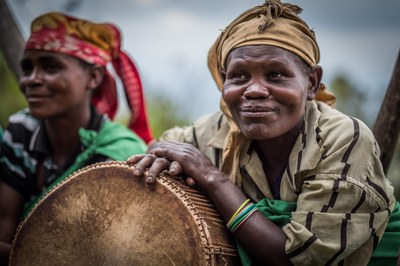East African Communities Build Awareness, Change Behavior

Building awareness and changing behavior are consistent themes in the Economics of Natural Capital in East Africa project, in which the United States Agency for International Development and its partners in the East African Community conducted a first-of-its-kind study of the region’s natural capital and its economic value.
Landscapes containing iconic wildlife, forests, grasslands, and waterways not only cross borders but deliver critical ecosystem services upon which governments, businesses, communities, and millions of people are mutually dependent. But the study found that eco-threats across these landscapes are intensifying and demand an urgent response.
An important output from the study is its Action Plan that shares opportunities for action by stakeholders at every level. For example, it found that private sector engagements through the East African Business Council showed a need for increased awareness and capacity to invest in nature-based solutions. The study recommends that the East African Community Secretariat and partner states develop a program to raise public and private sector awareness of novel land use models as viable alternatives to current unsustainable approaches.
As communities across East Africa grapple with the impact of eco-threats such as climate change, over-extraction of resources, and habitat and wildlife degradation, stakeholders in the public, private sector, and civil society are using sustained awareness-building as a foundation for long-term behavioral change at the community level.
External Pressures, Internal Traditions
In these communities, awareness of environmental threats can grow naturally and strategically. Residents near Murchison Falls National Park in northwest Uganda, for example, are experiencing some of both. Awareness grows naturally when community members observe firsthand, over time, the harm from external actors pushing land acquisition, mineral extraction, or poaching. They see their cultural sites destroyed, natural resources depleted, and once-accessible areas restricted.
Meanwhile, strategically built awareness comes through engagement with fellow stakeholders—government, industry, or environmental organizations—motivated by the need to change behaviors such as hunting illegal bushmeat, foraging firewood from protected forests, or other activities that harm fragile ecosystems.
When a community becomes aware of the benefits, such as tourism revenue streams that help build local infrastructure, its members are more willing to change behavior to protect resources.
Observations From a Ugandan Elder: Attitude Change and Training are Important
Such efforts are underway in communities near Murchison Falls National Park. While the Uganda Wildlife Authority has overall authority, local governments also play a role in building awareness among the communities. Sub-counties bordering the park receive a percentage of revenues to put toward efforts that help steer residents toward conservation and away from harmful activities.
“Attitude change, sensitization, and training are very important,” said Deograthious Kakura, a community elder who has lived his entire life next to the park. In an interview with researchers from the study, Kakura described how awareness is growing as residents learn to coexist with community-based natural resource management policies.
Kakura said his community has a say in which projects get funding. And rather than spending on smaller incentives such as giving livestock to individuals, local funds are focused on the collective good by building communal structures and spaces that allow everyone to benefit. Tourism revenue has funded their new health centers and teachers’ quarters.
Kakura cited other positive aspects. He noted that communities have access to free tree seedlings to plant around public institutions, and many structures (health centers, schools, etc.) have been donated via park resources. Certain income-generating activities are allowed in the park, which builds awareness on the importance of protecting the park. Communities also receive a portion of gate fees.
Not all changes come easily, of course. Natural resources in the area are still highly sought, especially at the household level. “That’s where people get things like firewood, timber, medicinal herbs, and many other things for their everyday life,” he said. Community members must now operate within constraints enforced by park management.
“Awareness has been created within the communities about conservation, but there is still that gap to make the communities act positively,” he said. “Especially when you create awareness but there is no follow-up.” He gave the example of a project that tried to train and sensitize communities about energy-saving cooking stoves but ultimately failed because it lacked follow-up demonstrations.
“After showing the community how a project will change their life, they respond well,” Kakura said. “People are getting it, but slowly.”
For more information:
Chihenyo Kangara
Regional Climate Change & Resilience Specialist
USAID Kenya & East Africa
Nairobi, Kenya


